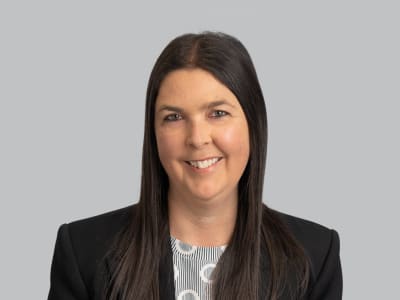As we step into 2025, not everyone is facing the start of a new year with optimism or excitement. With personal insolvencies projected to skyrocket in line with cost of living pressures and snowballing consumer and tax debt, there are many people set to experience a very challenging year ahead.
One of the biggest challenges could be the many thousands of expired Director Penalty Notices (DPNs) currently sitting with the Australian Tax Office (ATO). While there has been limited action to collect on them to date, the ATO has certainly indicated that this lack of enforcement will be short lived.
Among the options for those at the receiving end of enforcement from any creditor is bankruptcy. Often considered the end of the road, declaring bankruptcy can actually provide a profound sense of relief – especially if you have struggled under the weight of outstanding debt for some time.
What it means to declare bankruptcy
Declaring bankruptcy is akin to saying, “I cannot pay you, take everything I have and we’ll call it quits.”
This is unlike a personal insolvency agreement (PIA), which is more along the lines of, “Let’s make a deal and I’ll pay you this now and this over time.” PIAs are typically reserved for people who have significant debt, but can show that through the sale of certain assets and future income or voluntary contributions from family and/or friends that a reasonable amount can be repaid.
There are advantages and disadvantages to PIAs and bankruptcy, with bankruptcy offering a more immediate line in the sand in terms of settling past debts.
You can enter bankruptcy through one of two ways:
- A creditor petitions the court to have you declared bankrupt.
- You sign a debtor’s petition to declare yourself bankrupt.
A creditor can only apply to have you declared bankrupt for a debt of $10,000 or more, whereas you can declare yourself bankrupt for any amount of debt.
It’s important to note though that declaring yourself bankrupt carries weight. Once you submit a debtor’s petition to the Australian Financial Security Authority (AFSA) and they accept it, a number of events will follow:
If you have limited assets, the official trustee (a body corporate created under the Bankruptcy Act 1966) will become your ‘debtor trustee’ in bankruptcy. A debtor trustee is a qualified and registered professional who is appointed to manage your bankruptcy and administer your financial affairs. The official trustee is automatically appointed when there is no ‘Consent to Act’ form filed. It typically occurs in instances where you don’t own any property or have any savings, and the debt might relate mostly to personal borrowing such as credit cards or buy-now-pay-later schemes.
If you have assets or earn income over the threshold, AFSA will allocate your case to a private registered trustee to manage as it requires more time and resources. For example, you may own all or a portion of your family home and have other assets such as investment property or shares which need to be sold off.
When you do have assets, you may wish to engage a registered trustee before involving AFSA at all. The registered trustee will not only provide important advice and guidance, but can help you complete and submit the debtor’s petition with a ‘Consent to Act’ form which names them as the debtor trustee that you have chosen for yourself.
Once AFSA accepts your bankruptcy, the registered trustee will proceed to liquidate all assets and disperse the monies to creditors, thereby absolving you of any debt amounts owed to them.
Keep in mind that none of the following debts can be cleared through bankruptcy:
- Child support payments
- HECS debt or other government student loans
- Court imposed penalties or fines
These would remain owing, as would any new debt you acquire after your bankruptcy is accepted by AFSA.
Why get advice before declaring bankruptcy
As one of the few firms in Australia to provide both corporate and personal insolvency services, RSM’s fully qualified liquidators and registered trustees have supported many people through bankruptcy.
While most cases are relatively straight-forward, there are those where we find that someone has already submitted a debtor’s petition to AFSA thinking they had no way out, when really there were many other options available to them.
If indeed there are no other options, your registered trustee will help you understand what the bankruptcy process entails, including any restrictions on your life moving forward. Some of these include:
- no overseas travel without your trustee’s consent
- not being a director of a company
- not borrowing anything over $7000
- having to disclose to lenders that you are a bankrupt
You will also be required to pay contributions to the trustee if you earn over $71,826.30 (after tax and subject to increases in line with the number of dependants you have) a year equal to half the excess amount. These contributions are dispersed to creditors, and this applies for three years after your bankruptcy commences.
This three-year period of being what is called an “undischarged bankrupt” is quite important, which is another reason it’s beneficial to engage a registered trustee early on to ensure there are no errors that could cause this timeline to be extended. After the three years you will generally be deemed a “discharged bankrupt” and most of the above limitations will no longer apply.
While it can seem scary, bankruptcy certainly isn’t all doom and gloom. Especially with the right support, it can provide more of a soft landing to years of financial distress than the nosedive it is often perceived to be.
For more information about bankruptcy, or for a free and informal chat about your financial situation, please reach out to your local RSM office.





